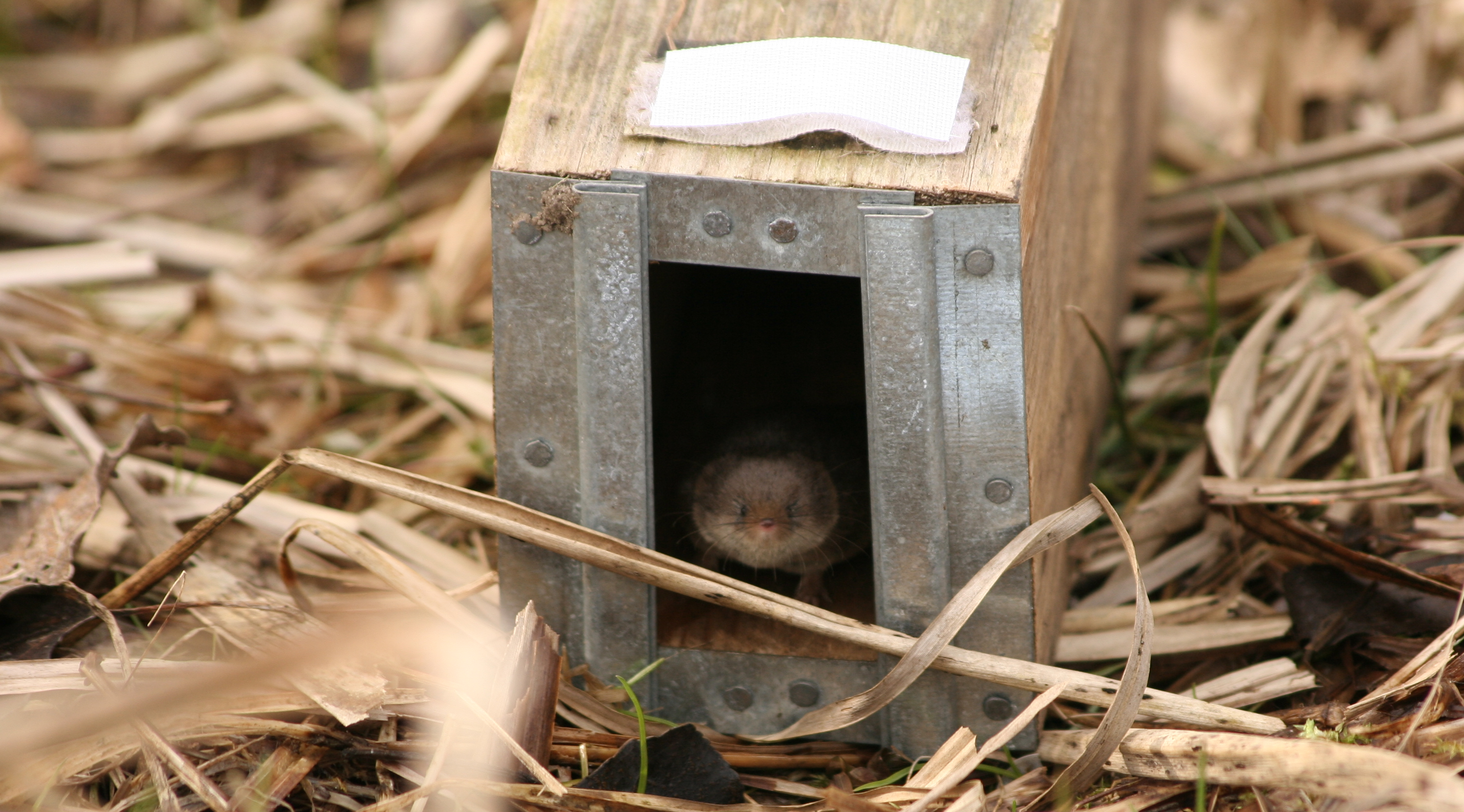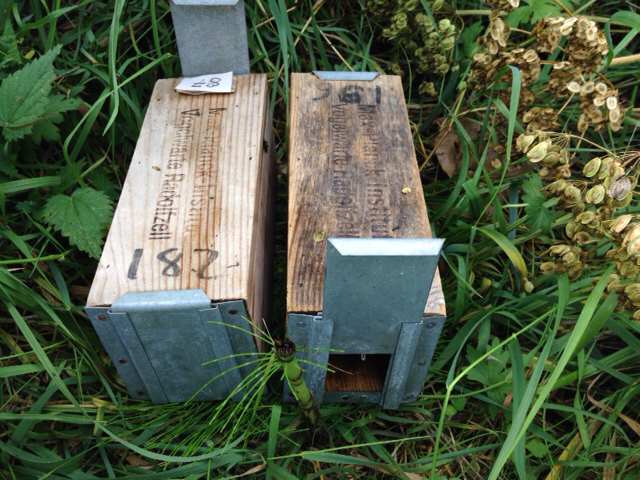.jpg?auto=compress%2Cformat&crop=faces&fit=crop&fm=jpg&h=360&q=70&w=540
)
Courtesy of Javier Lazaro
Shrews change size with the seasons. Could we do it too?
The environmental case for smaller, more adaptive humans
"Growing" means getting bigger, right? We start off small – as small as a single cell – and through very many cell divisions and adequate nutrition, grow bigger, until we reach adulthood. We may experience some weight gain over the holidays and some bone degeneration at old age, but the sizes of our adult bodies, much like those of most other vertebrates, remain fairly constant for the rest of our lives.
Not so in some mammals, it turns out. Specifically, not so in the common shrew (Sorex araneus), coincidentally Britain’s fourth most common mammal. These animals can "grow" smaller. Then bigger. Then perhaps smaller again. And they do it not through dieting or through water loss, but through palpable changes in the sizes of their bones, major organs, and overall body mass.
These cyclical changes in size are not random, but seasonal: shrews appear smaller in the frigid winters and plump up in the blossoming spring, a seemingly rare yet clearly effective survival strategy in the face of fluctuating environments and resources. And shrews aren't the only ones: weasels apparently do it too.

Hello
Courtesy of Javier Lazaro
More commonly known as the Dehnel phenomenon, these bewildering observations first caught the attentions of a Polish mammalogist, August (Gustaw) Dehnel, in the late 1940s. Since then, researchers have followed up on Dehnel’s work, collecting more data, searching for this phenomenon in other animals, and pursuing answers to the most elusive of questions – how?
Along the way, some have even asked if we humans could too co-opt this strategy - not to survive winters per se, but to survive future food shortages. In essence, could we, by getting smaller, reduce our carbon footprint and our pollution to save our planet? The debate has since been rife.
Despite garnering much interest, the Dehnel phenomenon has been challenging to study, methodologically speaking. In fact, up until now, these seasonally driven size changes had mostly been studied in skulls of dug-up shrews post-mortem.
The authors of a recent study however, all from the Max Planck Institute for Ornithology, set out to change that. Their goal was to witness these anatomic changes live: the ideal study would allow them to document changes in the skull size and body mass of individual shrews over time.

Shrew boxes
Courtesy of Javier Lazaro
To that end, the authors lured wild shrews in Moeggingen, Germany with mealworms, their absolute favorite. Armed with live-traps and an induction chamber commonly used for inhalation-anesthesia procedures, they managed to capture and temporarily knock out the wild animals.
While in deep sleep, the authors took measurements of the shrews' body masses as well as X-ray images of their braincases, the part of the skull that encloses and protects the brain and is the most commonly used proxy for skull size. The shrews were then marked with subcutaneous tags and released.
This methodology, repeated once a month, allowed the authors to document skull and body-size changes in wild shrews throughout the summer, winter and subsequent spring. But the real money was in the 12 shrews that fell for it each time. For each of these prized individuals, the researchers documented an entire lifetime of cyclical anatomic changes: summer peak, winter shrinkage, and spring regrowth. This data set was a definite step or two up from dead shrew remains.
Wonders of the shrew
The common shrew does not live too long by our standards: most are born in the early summer, and die after experiencing a single winter as sexually immature sub-adults, and another spring or summer as adults. Yet even in that limited lifespan, they accomplish several feats.
.jpg)
Behold, my first trick
Courtesy of Javier Lazaro
First, shrews exhibit the largest seasonal changes in skull size and body mass ever recorded in a mammal to date. Specifically, after months of luring, trapping, and measuring, the authors documented an average decrease of 15.3 percent in the height of the shrews’ braincases in the winter, followed by a spring recovery of 9.3 percent. The shrews’ body mass exhibited similar behavior, decreasing an average of 17.6 percent in the winter seasons followed by a whopping increase of 83.4 percent in the spring.
Second, shrew pups move around by forming caravans: they get into in a single file by clasping on to the tail of the sibling in front of them with their mouths, with mama shrew leading the way. This doesn't have to do with their growth patterns, but it's still quite a unique achievement.
Researchers have postulated that shrews' remarkable adaptability to seasonal changes is a survival mechanism. Some animals migrate, hibernate, estivate, and some, like fat-tailed sheep, store fat in their booties. Shrews adapt the sizes of their bones and major organs.
In cold seasons, a smaller body allows these highly energetic animals to survive the relative food scarcity as their metabolic demands increase in frigid temperatures.
While, I imagine, most vertebrates stand to benefit from such a strategy, this is particularly advantageous in shrews and some mustelids, like weasels and badgers, who tend to have higher metabolisms than mammals of a similar size.
A subsequent increase in size in the warmer months corresponds with breeding season, when bigger bodies are likely to make males better competitors and females better pup-bearers.
A mysterious mechanism
While impressive, shrews are merely doing what shrews do: they are responding to predictable weather changes – ones for which they have evolved over very many years. Sudden and extreme environmental changes can thwart even the most prepared: how such animals will fare as environmental conditions take unexpected twists and turns is unclear. Even less clear is the nature of the mechanisms that allow for such variations in the sizes of bones and organs. This, to my mind, is the most interesting question about the Dehnel phenomenon.
.jpg)
The blue gloved shrew feeder
Courtesy of Javier Lazaro
The authors suggest that one obvious possibility is that bones are somehow broken down and resorbed into the body in the winter and restored when warm weather comes knocking. But the devil is in the details: how are these environmental changes communicated and signaled to the body at the cellular level? What makes some organs responsive to such stimuli, but not to others? How does the body generate ‘new material’ for bone recovery in warm seasons?
The role that genetics and the environment play in determining the nature of such changes is also unclear. While the seasonality of these anatomical alterations may be genetically encoded, the extent to which they occur may hinge on how extreme the weather changes are. Unraveling the intricacies of this particular example would add to the repertoire of known mechanisms that allow living things to take in external information and to respond to it adequately and in a timely manner – i.e. the mechanism that allows us to exist.
Medically and less existentially, elucidating the physiological and genetic regulation that underlies these flexible anatomical changes in juvenile or adult mammals can have profound implications for how we approach degenerative afflictions that target the skeleton and major organs. Imagine if we could regenerate bones in osteoporotic patients, or regenerate livers in cirrhotic individuals with the same reproducibility and ease.
What if, additionally, we could co-opt such ploys for our survival? In reality, it was only a matter of time before someone suggested we weasel ourselves into smaller bodies as well to solve our ballooning population problem and pending doom of food shortages.
After all, we are persistently contemplating our cities of tomorrow in all of their challenges and opportunities: the nature of our food supply networks, the expanse of our futuristically green architecture and the perhaps frightening pervasiveness of our technologies - so why not re-think the (wo)man of tomorrow?
Some definitely have, and at least two individuals think the (wo)man of tomorrow is a significantly smaller version of our current selves.
'Greener' humans
Arne Hendriks, a Dutch historian, and 6’4", appears to be at the forefront of such thought experiments and, in his project 'The Incredible Shrinking Man,' is suggesting we downsize ourselves down to a mere 50 cm, about the size of a baby. This, he calculates, would reduce our consumption of food and fuel to 2 percent of what it is now. It would significantly reduce pollution. It would also allow us all to fit into the first class cabins of trans-atlantic flights.
And he is not alone. Matthew Liao, a bioethicist from New York University, has been toying with the idea of shrinking future humans by about 15 cm: a "greener" human with a smaller carbon footprint. This may be a less humorous suggestion than Hendriks', but it is more imaginable, and while nightmarish (hundreds of genes are involved in height determination), perhaps even theoretically doable given current and advancing genetic screening technologies.
But what about our cognitive abilities? For it would be a sad irony if our intelligence masterminded our then-irreversible dumbing down.
This question has not escaped the attentions of the shrew article’s authors. In fact, in a subsequent study, they showed that while smaller brains reduce energetic requirements, they also did impinge on the animals’ cognitive abilities: in experiments that tasked the shrews with spatial learning tasks, summer juveniles and spring adults, both which have relatively larger brains than winter individuals, sampled smaller distances in their quest for food.
That doesn't necessarily mean that this would happen to us smaller humans. After all, there is an accidental precedent: The Dwarfs of Sindh, of the Sindh province of Pakistan, grow to be only about three feet tall. The cause of their short stature is a mutation that leads to severe growth hormone deficiency. In a newspaper clip from the 1990s, individuals did report being unable to till the land or partake in their ancestral occupation as a result of their diminished size, yet researchers found no intellectual deficits in this unique cluster of dwarfism.
And if that's not convincing, recent studies have also shown that our brains have indeed diminished in size over the past 20,000 to 30,000 years or so, losing the volume equivalent of a tennis ball. Yet here we are
